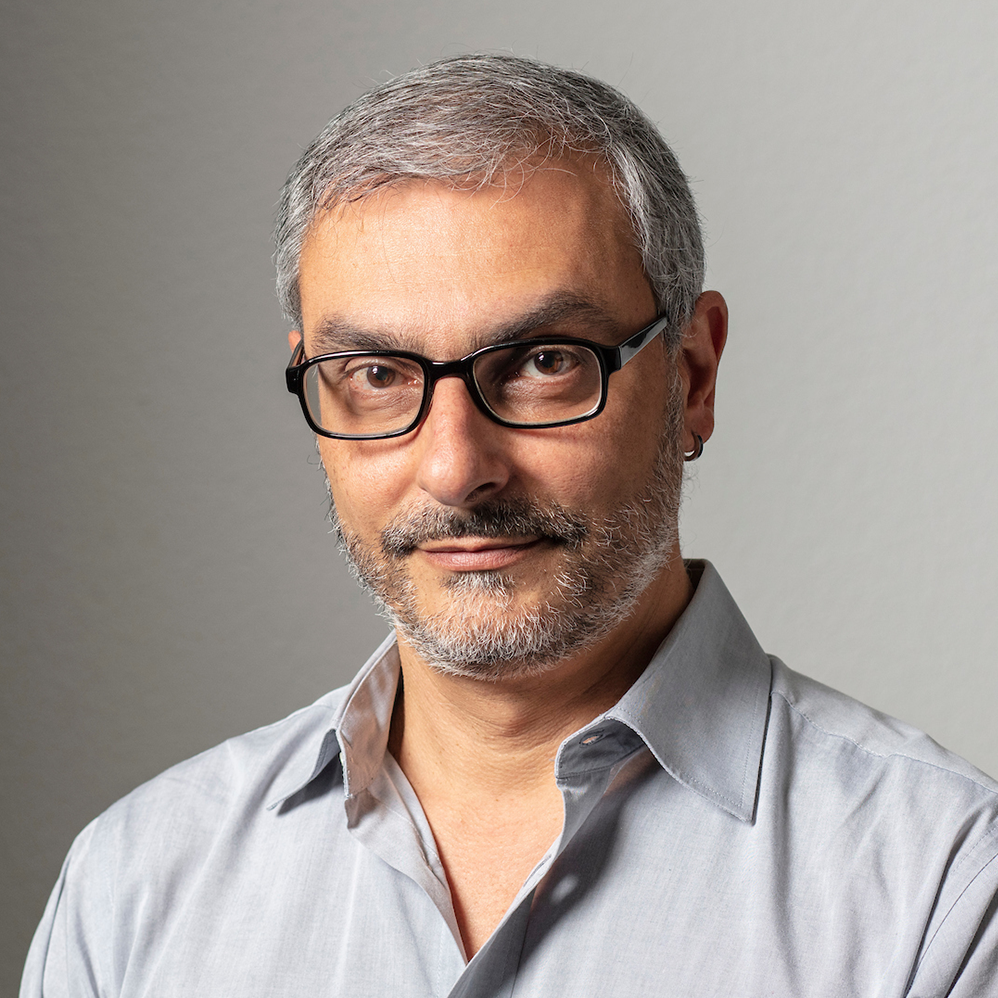Unique Brazilian Modernism art exhibition takes over Swiss capital

An unprecedented exhibition of 130 key works of art at the Zentrum Paul Klee in Bern seeks to insert Brazilian artistic production from the first half of the 20th century into the grand narrative of “global modernism”.
Switzerland’s participation in the Brazilian modernist adventure was first as a guide, and now as a host. The guide was the writer Blaise Cendrars, who was born Swiss (in 1887) but preferred to die French (in 1961), when he convinced a group of Brazilian artists – Tarsila do Amaral, Oswald de Andrade and Mario de Andrade, among others – to get to know their own country.
The worldview of this small clique of São Paulo elite at the time was restricted, on the one hand to coffee plantations in the countryside and palaces in the capital, and on the other hand to Europe and Paris.
In 1924, Cendrars took them not only to Rio de Janeiro, but to the favelas and the carnival. They then set off to explore the neighbouring state of Minas Gerais, where they discovered the local baroque imported from Europe in the 18th century and tropicalised. They had never interacted with so many “local folk” in their lives. And Brazilian art has never been the same since.

A century later, Switzerland is hosting the largest international exhibition of Brazilian modernism since 1944, when a dozen artists donated their works for auction in London in favour of the British war effort in the Second World War.
The current exhibition Brasil! Brasil!External link at the Zentrum Paul Klee in Bern presents 130 works by ten key artists from the movement and its offshoots. It will then travel to the Royal Academy of Arts in London (January 28 to April 21, 2025), with the addition of four more unseen works that remained in the country during the war auction.
Brasil! Brasil! takes on an importance far beyond the achievement of bringing together fundamental works of Brazilian modernism from public and private collections, including paintings that have been out of circulation for decades.

Modernism is global
More than a century after the first modernists tore down the tenets of the cultural establishment, the West is beginning to wake up to the fact that this dominant current of the 20th century was not a phenomenon restricted to Europe and the United States.
The various artistic and cultural currents roughly put together under the umbrella term of “Brazilian modernism” had an impact far beyond the aesthetic field. It reinvented post-colonial Brazilian cultural identity.
Their influence extended to practically all the arts and provided a ruler and compass for later movements, such as Concrete artExternal link and the Tropicália movement in the 1960s-1970s. The modernist generations of the first half of the last century are still key references for understanding the art and culture of Brazil today.
But despite sporadic appearances on the international art circuit, Brazilian modernism is not part of the curriculum of art schools around the world nor, with very rare exceptions (such as Tarsila), does it boast blue chips on the global art market. The vast majority of the most famous and/or valuable works are still in Brazil, excluding them from the general narrative of modernism.

Chest full of treasures
“I had no idea about Brazilian modernism, and I was shocked to learn that the world didn’t either. It was like finding a hidden treasure,” Swiss curator Fabienne Eggelhöfer told SWI swissinfo.ch while setting up the exhibition in Bern.
Eggelhöfer was preparing a comprehensive retrospective of Swiss artist Paul Klee in Brazil when she met and later teamed up with Roberta Saraiva Coutinho, director of the Museum of the Portuguese Language in São Paulo, to organise a collection of works that would take the first step towards rediscovering Brazilian modernism outside the country.

The project of the exhibition in Bern coincides with the appointment of Adriano Pedrosa, director of the São Paulo Museum of Art (Masp), to curate the current Venice Biennale – the first Latin American to take over the event. He dedicated part of its main exhibition to the modernists.
In view of the multiplicity of works, artists and periods, the big challenge for Eggelhöfer and Coutinho was deciding which works to show without losing sight of the limitations of budget and space. The curators divided the show into two parts: one dedicated to the modernist canon, that is, works and artists critically recognised as fundamental to the movement; and another part outside the canon but linked to the modernist wave either as satellites, influences or “offspring”.
It is this second part that elevates Brasil! Brasil! to a more contemporary reading that does justice to artists who, for reasons of class, race or thought, were left out of the established critical narrative in Brazil until recently. This is the case of Flavio de Carvalho, Djanira da Motta e Silva, Rubem Valentim, Alfredo Volpi and Geraldo de Barros.
Double rupture
As the term “global modernism” becomes the norm in contemporary art discourse, the development of modernism in “peripheral countries” such as Brazil, Mexico or India has undergone a double movement of rupture.

At first, they aligned with the European avant-gardes of the early 20th century – cubism, fauvism, expressionism, surrealism, among many other “isms”– radically breaking with and questioning the very concept of art, its function, its value, and ideas of “beauty”.
As can be seen in Bern, the early careers of Brazilian modernists Anita Malfatti, Tarsila do Amaral, Vicente do Rego Monteiro – plus Lasar Segall, a Lithuanian who lived in Berlin before emigrating to Brazil – were strongly influenced by European movements such as expressionism and futurism.
Simply replicating the new European trends, however, didn’t solve the issue of Brazil’s cultural dependence on the major art centres of the West. A second break was needed, this time with foreign modernism itself.
In Brazil this redefinition of modernism came in the form of several manifestoes elaborated by the poet Oswald de Andrade. With the Pau Brasil Manifesto (1924) and the Manifesto AntropofágicoExternal link (which translates as the “Cannibal Manifesto”), Oswald evokes the Tupi ancestry of Brazil – one of the main indigenous cultures in the territory before the Portuguese “discovery” (or invasion).
!["Retrato de Oswald [de Andrade]", tela de Anita Malfatti de 1925 ainda sob o signo do expressionismo europeu.](https://www.swissinfo.ch/content/wp-content/uploads/sites/13/2024/09/04_Malfatti_Retrato-Oswald.jpg?ver=cbb85f39)
In travelogues by early explorers like the German Hans Staden and essays by Enlightenment philosophers such as Voltaire, South American indigenous peoples used to be depicted as savage cannibals. Oswald incorporated this idea and argued that it was necessary to devour and digest the foreign, absorbing its nutrients and then dumping what was not good. Hence, genuine art, open to influences from all over the world and at the same time faithful to its own roots, could thrive.
This very modern and radical attitude hides other problems, though. As researcher Alecsandra Matias de Oliveira concludes in her essay published in the exhibition catalogue, the modernist Brazilian artists set out to “discover Brazil” through European paradigms, leading to an idea of “Brazilian-ness” that associated Black and indigenous populations with “primitive” or “folksy” artistic expressions. This “primitivism” was very popular in avant-garde circles, which “positioned themselves as ‘cultural guides’ for this ‘people’.”
This Leninist attitude (of a white vanguard of the black, brown, indigenous herd) evolved practically unquestioned until very recently, when a new generation of scholars, artists and curators began to expand the focus of Brazilian modernism beyond the strictures of class and race.

Tropical offspring
The Brazilian modernist drive followed three generations: the so-called “1922 group” kicked the movement with a milestone exhibition in São Paulo that same year; by the 1930s, paying attention to the trend set by Stalinist Russia on communist art, formal experimentation gave place to a focus on political themes. And finally, the “1945 generation” reckoned aesthetics and politics under the impact of the war and the atomic age.
By the 1960s, anthropophagy was updated and re-cannibalised by TropicáliaExternal link, a movement of young artists mainly from the northeastern state of Bahia, who fed on rock and roll, folk songs and sacred music. If music is where Tropicália was most evident (think of Gilberto GilExternal link or Caetano VelosoExternal link), its tentacles spread to the visual arts (the Whitechapel Gallery in London has just opened a grand retrospective of Lygia ClarkExternal link), film, theatre, and even into advertising and TV programmes – and not to mention its influence on architecture and design.
Like Blaise Cendrars 100 years ago, the exhibition now in Bern opens an unprecedented window onto a whole continent to be (re)explored.

Edited by Virginie Mangin/gw

More
Newsletters

In compliance with the JTI standards
More: SWI swissinfo.ch certified by the Journalism Trust Initiative









You can find an overview of ongoing debates with our journalists here . Please join us!
If you want to start a conversation about a topic raised in this article or want to report factual errors, email us at english@swissinfo.ch.